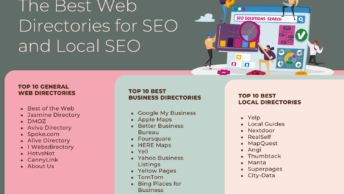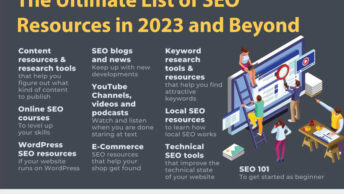It seems odd to put the word “inbound” and “outbound” in the same phrase. All we hear about is “inbound marketing.” It is almost like “outbound marketing” is a naughty word/phrase.
The two types of marketing are quite different. With all of the differences, there are also some similarities. Before we start, let’s define inbound and outbound marketing. Let’s also look at examples of each.
What is Outbound Marketing?
Outbound marketing is what used to be called “internet marketing” before Web 2.0 came on the scene. Now, everything is about engagement and relationship marketing. Back then, all we had was static websites. Most people could only “broadcast” their message and not engage with their clients.
Also, outbound marketing is called interruptive marketing or even traditional marketing. The idea behind outbound marketing is that you need to get your message to as many people as possible (i.e. television advertising).
It is true that there were discussion boards and forums back in the 90s (where do you think sites like WebmasterWorld.com came from, originally?). However, not everyone had forums. The most engagement a site saw back then was a guestbook (like a comment thread, in some ways). Oh, and there were no blogs and no comments.
For those who did not experience that time, it is likely hard to imagine.
So, if you understand how times were back then, it makes a little more sense that outbound marketing was all that there was, and it was simply called “internet marketing.”
Some examples of tactics that were used were the use of free-for-all link pages, banner advertising (to the nth degree!), and unsolicited bulk email. Yes, there was a time, back in the 90s, where Internet marketing gurus actually taught businesses how to send unsolicited email, as an ethical and legitimate means of advertising. That eventually turned into “permission marketing” where an individual would be asked if they wanted to be contacted. Now, permission marketing is the standard and is a part of the overall inbound marketing scheme.
Fortunately, we have changed our thinking and find the practice of sending unsolicited bulk email (a.k.a. “spam”) distasteful and only carried out my unscrupulous, uh, “spammers.”
Sidebar: Not to excuse spammers, but understanding the history of Internet marketing helps to put it into context when there is someone from a business or region that has not remained current, and they think sending spam is ok. It may be a case of them not having caught up with the last 15-20 years of best practices. Then, again, a lot of the spam I see simply has no excuse and those that send it do not seem to care about any sort of code of behavior or being considerate of the recipient’s desires.
Back to the topic at hand…
Offline outbound marketing would include cold calls and junk mail. It also includes legitimate practices like website and television advertising. These tactics are still in place today, and sites like Examiner.com still use banner advertising that pops up everywhere. It is a useful form of advertising. There may be a question of how much we enjoy the Examiner.com banners and pop-ups, but the practice of broadcast advertising is still considered a legitimate form of marketing.
Even if inbound marketing is preferred, there is still a place for outbound marketing. The key is to do it the right way. Personally, I would simply choose to be less interruptive and disruptive.
There is an article called “How to Be Successful at Outbound Sales Calls.” While the article covers outbound sales calls, it also points out something that most of us think of as common sense. For example, being courteous. In the same way, when you are designing your website, it is a good idea to think about courtesy to your viewers and visitors. Not only is it the “nice thing to do,” but it will help you to keep the clients and not offend them into choosing not to be your customer.
What is Inbound Marketing?
The phrase, “inbound marketing” is the current buzz phrase. Like we mentioned above, back in the 90s when the term “internet marketing” made its debut, that was the only phrase used and it really was outbound marketing. Yes, back then, “internet marketing” was synonymous with what is now called “outbound marketing.”
Just because the phrase “inbound marketing” is a popular phrase, does that mean we understand it?
HubSpot presents one of the best definitions of “inbound marketing” that I have seen. In their free inbound certification course, they give a visual definition (see SlideShare, below). Even the first lesson helps to illustrate it by providing a comparison of inbound and outbound marketing. It is worth the time to pop over and sign up for free certification.
By the way, just this past week, I noticed that a paid job requires the HubSpot Inbound Certification! Aren’t you glad it is free?
Here is HubSpot’s SlideShare that shows the same content as the course, about the definition of “inbound marketing:”
[slideshare id=29665969&doc=whatisinboundmarketingfinal-140103105843-phpapp02]Blending the Two
There is still a place for both types of marketing. Examiner.com, for example, would not make money if they did not have some outbound marketing tactics on their site. The inbound marketing approach (refer to HubSpot’s SlideShare above) is more touchy, feely, and more appealing for the user. This is why it is promoted, and that is why companies seek marketers who are familiar with how to create effective inbound marketing strategies.
At the end of the day, it still comes back to courtesy and treating your customers well. If you can master that, whether you are inbound or outbound, you will have established a solid business foundation and one in which your customers feel good… and, keep coming back to you.







